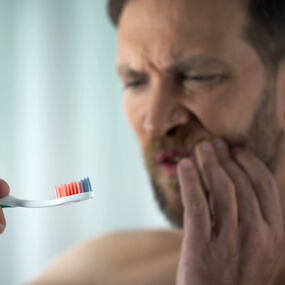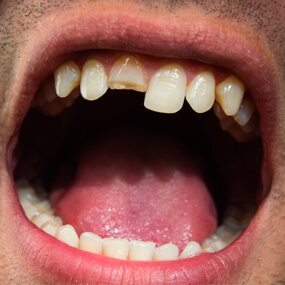The Truth About Cavities: 6 Myths and the Facts

Dental medicine is more sophisticated than ever. Despite that, dental cavities are still the most common chronic disease among children and adults. The National Institutes of Health recently published a study in which it found that 92 percent of adults have had a cavity and 26 percent were currently dealing with an untreated one. These are staggering statistics when you consider that cavities are easily prevented.
Good oral hygiene is essential to the health of your teeth and gums and all other aspects of your mouth. But what does that actually mean? There is a great deal of information—and misinformation—available, and prevalent misconceptions can lead you to do things that are rather bad for your teeth!
In order to help you better understand cavity prevention, here are six misconceptions and the facts:
Misconception #1: Only Sweets Cause Cavities
Society has done itself an injustice by focusing so much on sugar when it comes to cavities. Sugar certainly does cause cavities, but this emphasis has, for instance, erroneously led people to believe diet soda is OK for your teeth. Not only is it not OK—and here is the shocker—it can actually be worse. That is because diet sodas are loaded with acids in order to offset the lack of sugar in the taste.
Sugars and starches break down in your mouth and create acids. You can also introduce acids directly through the beverages you drink and the fruits and other foods you eat. These acids compromise your tooth enamel, which is what leads to cavities. Sticky foods—such as dried fruits—are particularly problematic since they stick to your teeth, and the acid continues attacking them over time.
Misconception #2: Brushing Alone Will Prevent Cavities
Brushing twice a day is essential to preventing tooth decay. But if brushing is all you do, you will likely get cavities. Your diet plays a role. You need a well-balanced diet for your overall health but also one that emphasizes teeth-friendly foods. Drink more water. Avoid soft drinks, and limit your intake of foods high in acids, sugars, and starches. You must floss once a day not only to dislodge food particles but to disrupt the plaque that can accumulate between your teeth and in those other hard-to-reach places. Be particularly careful when eating foods and snacks that can stick to your teeth. Avoid brushing more than twice a day, but you can rinse vigorously with water after other meals and snacks.
Misconception #3: Gum Is Bad for Your Teeth
Wrong! Gum with sugar is bad for your teeth because… well, the sugar. The gum itself actually helps your teeth. It promotes saliva production, which washes away food particles and combats bacteria. Chewing sugar-free gum after meals is highly recommended, and a great option when you are out, and gum with xylitol is actually known to disrupt plaque formation and thus help prevent cavities.
Misconception #4: My Teeth Are Pain-Free and Thus Cavity-Free
This misconception leads to one of the biggest dental care mistakes people make: not seeing a dentist until something feels wrong. An initial cavity is smaller in size than a pinhead and likely will not hurt. As the hole grows bigger, you may experience sensitivity to hot or cold but not necessary discomfort. This is why it is so important to visit your dentist every six months, regardless of how your teeth and gums feel.
Misconception #5: Grinding Your Teeth Can Cause Cavities
Cavities are caused by acid creating holes in the tooth enamel. Grinding or clenching your teeth—bruxism—does not do that. Bruxism does damage your teeth in its own way, however. It creates a great deal of undue stress that eventually chip and crack your teeth and lead to decay in that manner.
Misconception #6: Cavities in Baby Teeth Are Not Serious
Baby teeth serve a purpose. They act as guides for the permanent teeth that will come behind them. If those teeth decay or fall out before that happens, it can lead to misalignment and other issues with the permanent teeth. In addition, cavities can cause pain as well as serious infections.
Bonus Fact: You Can Prevent Cavities
You know the old adage: An ounce of prevention is worth a pound of cure. Preventing cavities will not only save you unnecessary grief but unnecessary dental expenses too! Brush after breakfast and before going to bed. Floss once a day. You can use a therapeutic oral rinse once a day as well. Finally, visit your dentist every six months to have your teeth cleaned and your mouth examined.
Be Proactive About Cavity Prevention
When caught early, a cavity can actually be reversed! Your dentist can also help you make the adjustments necessary to avoid cavities in the future. Jeffrey D. Clark, DDS, is among the most respected dentists in the Greater Scottsdale area, and he takes a leading-edge approach to preventative and restorative care. Call Scottsdale Cosmetic Dentistry Excellence at 480 585 1853 to schedule your checkup.




